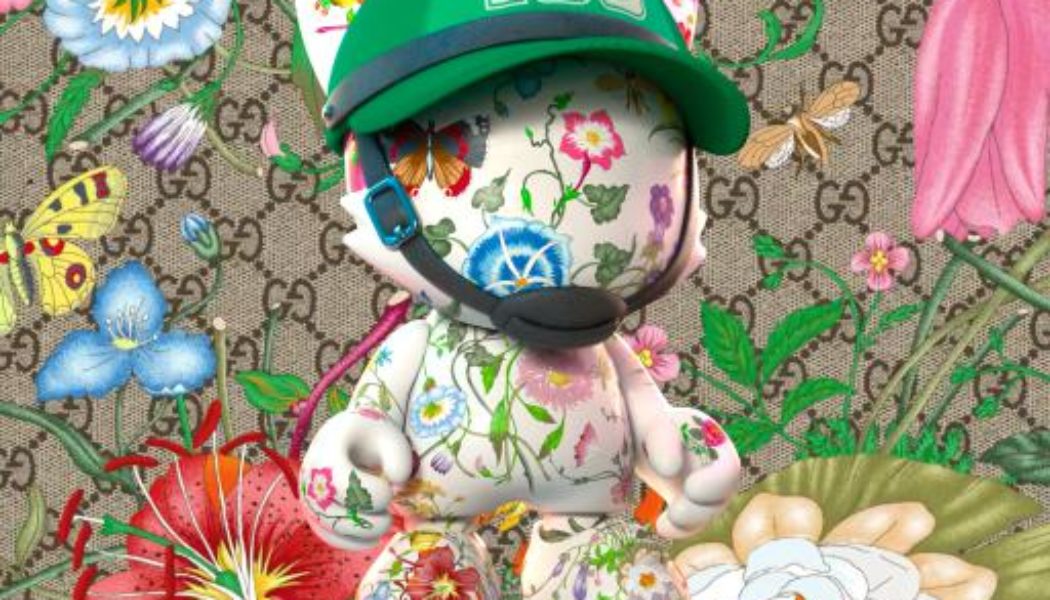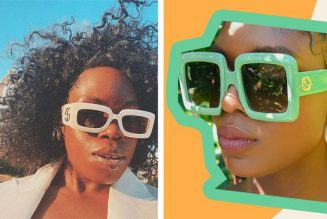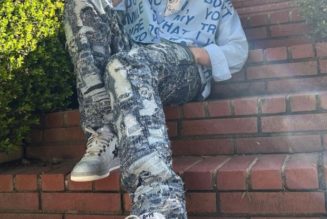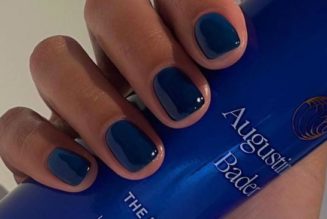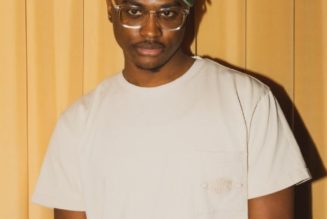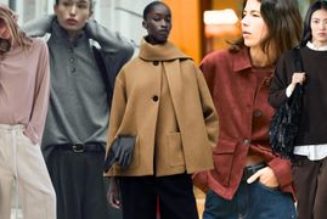
The metaverse is one of the most popular virtual worlds that exists today. Less popular is the task of defining it. One person might say it’s “an immersive, 3D computer-simulated environment that can be shared and navigated through virtual reality headsets.”
Another might reduce it to “a virtual world in which we experience people, products and places from the inside, via an avatar.”
My colleague at IMD, Goutam Challagalla, frames it helpfully as “a concept, not a technology,” adding that defining it might, therefore, not be as useful as thinking of it as an ecosystem of technologies, offerings and new customer relationships.
Why do we need to care about something that causes so much difficulty merely to define?
The SANDBOX is one of leading game platforms that shapes the metaverse ecosystem
The numbers speak for themselves: 2.5 billion people are currently active in the virtual world (L’Atelier) and trading in NFTs totaled over USD 17.7 billion in 2021 (Nonfungible) – a 21,000% spike. Analysts anticipate that the market for virtual luxury goods could reach USD 50 billion by 2030.
A second IMD colleague, Mike Wade, adds further insight: “The metaverse might currently be about games with The Sandbox and Decentraland, but in the future you will be able to do almost anything in this world.”
In the case of luxury brands, the metaverse aligns with an emerging consumer trend known as “experiential luxury”, which indulges the senses on multiple levels, beckoning us toward an immersive experience, using technology, color, pattern, and material as base ingredients.
But “doing” experiential luxury well requires a transformational approach. As does “doing” the metaverse…
Luxury’s response to metaverse fervor
General view of the Etro Fashion Show during Metaverse Fashion Week on March 25, 2022 in … [+]
The metaverse sits in a wider web 3.0 ecosystem that includes AI, crypto, NFTs, DFi and blockchain. It will ultimately revolutionize ecommerce, blending physical and virtual retail, taking us away from 2D online shopping.
There are many limitations to web 3.0 as it stands, including the fact the tech isn’t there yet. And yet, ironically, the tech will really pick if brands support the process by discovering real customer needs and pain points they can solve.
Luxury brands are exploring just how, having invested in ways to combine service, the circular economy, storytelling and personalization. This flurry of activity is a far cry from the industry’s reaction to the e-commerce boom of the early 2010s, when many luxury brands were in denial about tech’s relevance. Kering was one of the players who believed early in digital. Grégory Boutté, its Chief Client and Digital Officer, explained to me the rationale behind luxury brands’ interest in the metaverse: “the world of NFTs and the world of luxury cross paths on exclusivity, scarcity and creativity.”
But it’s important for each brand to find its place. Doing so requires grasping what is possible, and the companies that are leaning in fast can both offer inspiration and act as test cases, writes Janet Balis in Harvard Business Review.
Those luxury brands that are not engaging with the metaverse, as well as those that are doing so in a “gimmicky” way (that is, going too fast just to create noise) can learn from those that have a metaverse-oriented business goal.
Jana Arden, Head of Luxury Sector at KPMG, told me that her observation was that luxury brands are building innovative strategies in three main ways: by heading towards consumers, focusing on employees and/or executing operational efficiency.
One can also understand brands’ approach to the metaverse by looking at how they are trying to create value (what they do), for which customers (the who), and how they execute it all.
The What: Money is being created and captured in novel ways
When it comes to the metaverse, some say there is a compromise to be had: on the one hand there are brands that have focused on monetization – take Dolce & Gabbana’s Genesis Collection presented in September 2021 – and, on the other, those that use the metaverse to focus on retaining their customers:
“Brands will use the metaverse with a purpose, focusing on long-term relationships with our customers, not short-term gains,” Pedro Lopez-Belmonte, web3 & Technology Innovation Senior Manager at Swiss luxury-goods manufacturer Richemont, told me recently.
His view of the metaverse is wider than your average one: “It’s the frictionless, the seamless element really is going to be the strength,” he said.
He was thinking of a world in which everyone would be connected with an implant in their brain and a virtual visual display in one eye; one look into a shop window and we can have all the information about the products we need.
If you listen to Arden, you might not think there is such a trade-off to be had: “Luxury is about experience and emotion so [luxury brands] have the opportunity to build experiences that are not available in the physical world. Brands can give consumers a new way of interacting with them and enhance loyalty and new revenues.” Say a 37-year-old loyal, female customer of a CHANEL face cream decides to change identity: it’s not a question of whether but how CHANEL can engage with her directly via digital assets, to remain relevant for her in her new space with the new social norms it entails.
Existing products extended for Web 3.0
So how are brands trying to boost revenues? One way is through fresh offerings, such as new physical products or services around existing physical products, geared for Web 3.0 functionalities.
Two examples come to mind. One is Jacob and Co’s watch for crypto owners. The Jacob & Co limited-edition Twin Turbo Furious BTC has a built-in cold storage wallet that allows you to securely store your Bitcoin offline. Another is TAG Heuer’s collaboration with crypto payment processor BitPay to accept crypto payments for its luxury Swiss watches.
Virtual products created for the metaverse
Artist Derrick Adams auctions an NFT titled “Heir to the Throne”, commissioned by musician Jay-Z to … [+]
The most popular way to translate the digital experience into revenue is via non-fungible tokens (NFTs). We know that people will pay for these digital collectibles and for them to have a second life in the metaverse. Luxury, we also know, gels with the very definition of NFTs: fungible means it is exactly the same as something else, whereas non-fungible means it is a one-off – in this case, a unique type of digital identifier.
One example is Louis Moinet, the Swiss independent watchmaker, who, in 2022, launched 1,000 NFT watches that were sold in 7 minutes, so strong was the attraction of potentially reselling them at a good profit.
If you can advertise, socialize, create and explore in the metaverse, bringing real estate to the game is obvious. So says Michael Martinez, Real Estate Associate at ONE Sotheby’s International Realty.
At Sotheby’s, virtual copies of houses are being bought, together with the real-life one, to exist in the metaverse. Such real estate purchases are represented by NFTs. The token demarcates individual coordinates, just like real-world parcels, and the combination of several adjacent parcels results in one property.
Sotheby’s also offers the sale of virtual land, purchased with cryptocurrency. Property owners can develop it into a variety of worlds, events and experiences. “Really, the concept of real estate remains consistent whether it’s on a city block or on a blockchain,” says Martinez.
New business models
Even more radical than bitcoin watches and NFTs are new business models. Although it is still very early days, luxury brands seem to position themselves between existing business models that can be adapted for the metaverse and new business models purely for the metaverse.
Rental – of spaces, cars and more – is an example of the former. By participating in the sharing economy, some luxury brands are showing they are in tune with luxury’s business models of the future: rental, metaverse and web 3.0. Porsche, with its Porsche Drive App that puts the Porsche fleet at customers’ fingertips with white-glove delivery in the form of long- or short-term rental, is a prime of applying rental to luxury.
Experiences for web 3.0 and the metaverse will likely see rental taken to a whole new level of innovation.
For instance, in the metaverse the sharing economy could thrive with participants raking in incentives for their contribution in a decentralized fashion. At the same time, users may come to interact with a virtual 3D space through their avatars and simultaneously work, study, attend events, play and increase their experience points. In return, they could generate rewards for participating and increasing the adoption rate of this metaverse.
“[Cars’] virtual acquisition is useful: vehicles, trucks or motorcycles can be rented and when the metaverse is democratized, the invested goods can be resold with a nice capital gain. Beware, however, that this new technology has not yet proven itself and demand can collapse at any time. Nevertheless, the rental of vehicles in the metaverse remains a great future prospect for many business and large automotive groups,” writes Hitch Software which is already working on the software behind this vision.
Watchmaker Rolex’s wish to get in on the metaverse game is evidenced by an October 2022 trademark application filing related to cryptocurrencies, NFTs and virtual goods. Its vision illustrates a new business model idea purely created for the metaverse. Along with a desire to conduct virtual goods auctions for digital collectibles, such as watches and art, Rolex is looking to set up “online spaces for buyers and sellers of virtual products such as watches and watch parts.”
The Who: Choosing the right customer communities
NEW YORK, NEW YORK – MAY 04: Benoit Pagotto, Co-Founder RTFKT Studios, speaks onstage during the BoF … [+]
Another strategic decision that luxury brands need to make for the metaverse is about choosing the right customer segment. Heading towards customers is a new channel of interaction and one that’s often about finding the right community and catering to it.
An example is Swiss watchmaker Hublot’s opening of a new stadium for 90,000 football lovers in January this year, partnering with architects MEIS and metaverse builders Spatial. It was designed to respect “Hublot’s love for football, boundless innovation and community.”
Consider also how Vogue is delving into the metaverse to appeal to the fashionista community. It appealed to art dealers in September last year via Vogue Meta-Ocean, an experience involving a mythical underwater world and featuring work by artists including 3D digital sculptures. Many of the pieces were inspired by the pages of various Vogue September issues and involving the wearing of digital fashion.
“Fashion has always been about creative freedom and about challenging norms. Whether or not you’re already getting dressed in a metaverse, the new thinking in digital fashion and virtual fashion is fascinating to see,” said Anna Wintour, Chief Content Officer of Condé Nast and Global Editorial Director of Vogue. “Designers who work in this way are only going to become more known and more influential, and I will be eager to see what they do next.”
A third example of appealing to a niche audience via the metaverse can be found in tapping into the gaming community, by offering branded experiences.
Luxury brands have been creating skins for avatars since Louis Vuitton partnered with Riot Games’ League of Legends back in 2019.
“These digital products have a kinship with streetwear in that the t-shirt is not the value — the scarcity is the value, the community is the value — but the opportunity is much bigger than streetwear because of the scale of the tech,” said Ian Rogers, LVMH’s former chief digital officer.
While collaborations are rising they don’t last very long, says Arden. When Nike went the whole hog and acquired RTFKT – a company that creates virtual trainers and collectibles for the metaverse – Benoit Pagotto, RTFKT’s founder, said it gave Nike a “petri dish for web3 next-gen luxury”. Nike has since escalated him to Senior Director Brand & Partnerships which will help Nike broaden its net in terms of its new audience.
The opportunity in virtual fashion made for video games remains significant despite bitcoin and Ethereum’s market falls since 2021. With brands delving into these new territories, a key question is: how do brands sustain – reinvent, even – their brand desirability within this ambit? There’s a marked shift in the look and feel we associate with luxury.
Pagotto’s vision when he was pitching to Nike was rooted in two core convictions: (1) that peoples’ digital possessions would soon be more valuable than their physical possessions, both emotionally and financially, and (2) that the value of a brand was increasingly linked to the strength of its community. This is supported by a KPMG survey that showed that 71% of respondents wanted to try the technology, 68% were in favour of creating new identities and 68% of meeting new people.
The How: Firms are reorganizing themselves to deliver new promises
Balenciaga has created a dedicated team to support its metaverse initiatives
Without good execution, visionary ideas may get nowhere. Thus, it is not surprising to see brands are optimizing internal organizational choices and capabilities development, with some creating or developing existing business units dedicated to the metaverse and related possibilities.
Take Gucci’s appointment of Robert Triefus in November 2022 as CEO of Gucci Vault and Metaverse Ventures, a division designed to scale and expand the brand’s metaverse and gaming strategies. He doubles up as senior executive vice president for corporate and brand strategy.
Gucci Vault is an experimental online concept space that holds its NFTs and other Web3 projects, in addition to its pre-owned Gucci sales and curation of outside, independent brands. Apart from being one of the first to experiment heavily significantly in gaming platforms, Gucci created a virtual world on Roblox . It was the first luxury brand to launch an NFT, and has partnered with virtual world and NFT project 10KTF, and is now building out a space in blockchain-based virtual world The Sandbox.
In December 2021 Balenciaga said it was creating a dedicated team to work on projects in the metaverse. Only The Brave (OTB), the parent company of Diesel and Maison Margiela, announced the creation of new business unit Brave Virtual Xperience the same week.
“#OTB Group today announced the formation of Brave Virtual Xperience #BVX, a new business unit led by Stefano Rosso. BVX will be entirely dedicated to the development of products, projects and experiences designed for the #virtual world or #metaverse,” BVX CEO Stefano Rosso was quoted on Twitter.
Training well for the metaverse
In the current climate, many executives will be inclined to focus their attention elsewhere as urgency around the metaverse wanes, as Doug Stephens writes in the Business of Fashion.
“Ironically, it’s exactly at this point in the hype cycle when we should begin paying closer attention. This is the point at which venture capitalists sharpen their pencils and tighten their purse strings, where start-ups make painful pivots and engineers and developers go back to the drawing board,” he adds.
But at the same time, brands need to be patient when executing the critical work of incubating and scouting their next moves and business models. Move too early and there are potential risks to brand reputation; move too late and it might be hard to catch up.
The metaverse is a marathon. If we are to define a luxury brand’s strategy for completing it, it is this: define a vision, what the customer needs, and sharply focus resources on the execution of these goals.
In part 2 of this two-part deep dive into the metaverse and luxury brands, I will take a critical look at some of the pitfalls brands face when delving into the metaverse. There are undeniably a lot of headwinds against it. I will ask also what luxury could do to help the field evolve in the “right” way.
